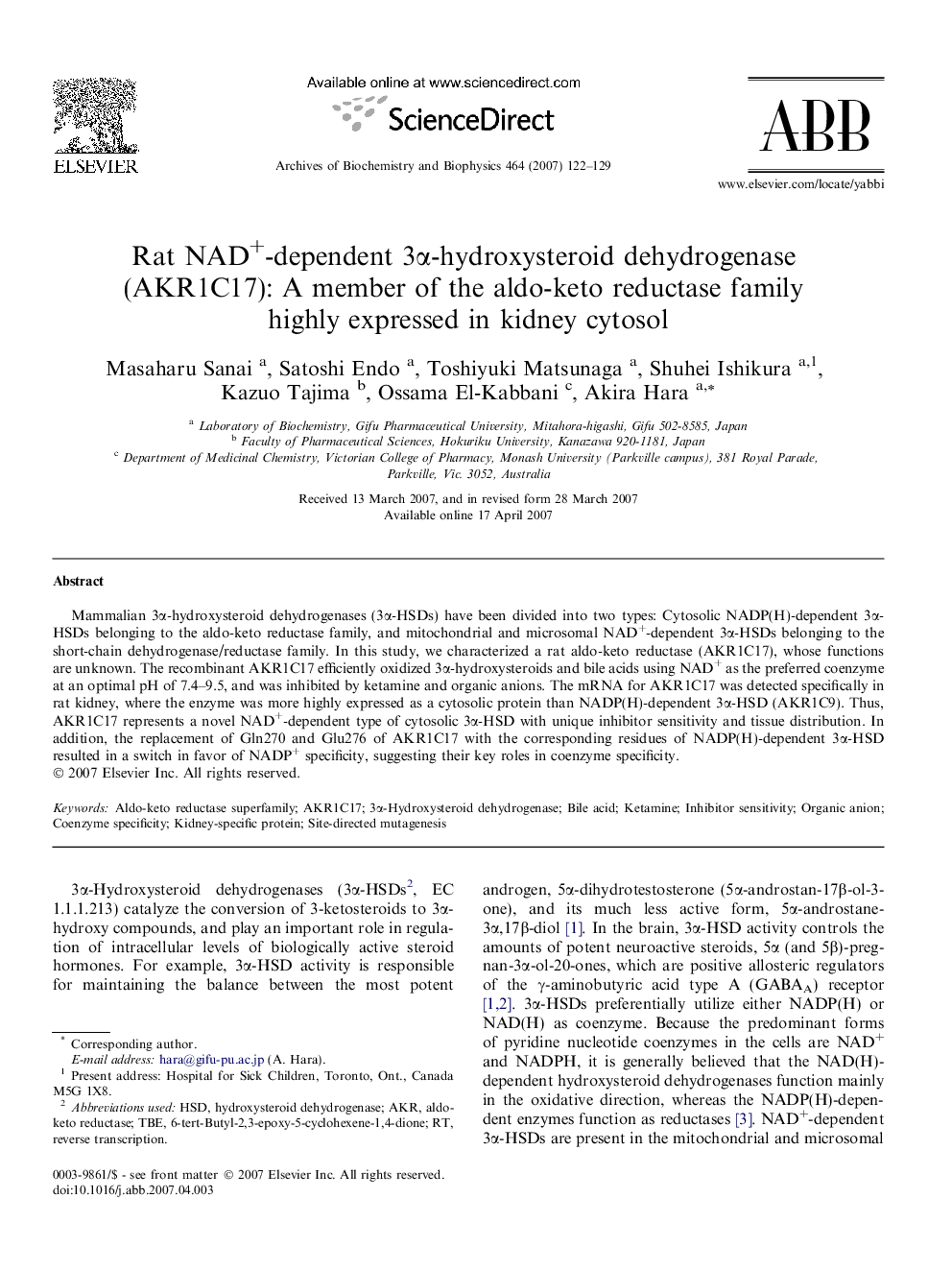| Article ID | Journal | Published Year | Pages | File Type |
|---|---|---|---|---|
| 1926987 | Archives of Biochemistry and Biophysics | 2007 | 8 Pages |
Abstract
Mammalian 3α-hydroxysteroid dehydrogenases (3α-HSDs) have been divided into two types: Cytosolic NADP(H)-dependent 3α-HSDs belonging to the aldo-keto reductase family, and mitochondrial and microsomal NAD+-dependent 3α-HSDs belonging to the short-chain dehydrogenase/reductase family. In this study, we characterized a rat aldo-keto reductase (AKR1C17), whose functions are unknown. The recombinant AKR1C17 efficiently oxidized 3α-hydroxysteroids and bile acids using NAD+ as the preferred coenzyme at an optimal pH of 7.4-9.5, and was inhibited by ketamine and organic anions. The mRNA for AKR1C17 was detected specifically in rat kidney, where the enzyme was more highly expressed as a cytosolic protein than NADP(H)-dependent 3α-HSD (AKR1C9). Thus, AKR1C17 represents a novel NAD+-dependent type of cytosolic 3α-HSD with unique inhibitor sensitivity and tissue distribution. In addition, the replacement of Gln270 and Glu276 of AKR1C17 with the corresponding residues of NADP(H)-dependent 3α-HSD resulted in a switch in favor of NADP+ specificity, suggesting their key roles in coenzyme specificity.
Keywords
Related Topics
Life Sciences
Biochemistry, Genetics and Molecular Biology
Biochemistry
Authors
Masaharu Sanai, Satoshi Endo, Toshiyuki Matsunaga, Shuhei Ishikura, Kazuo Tajima, Ossama El-Kabbani, Akira Hara,
